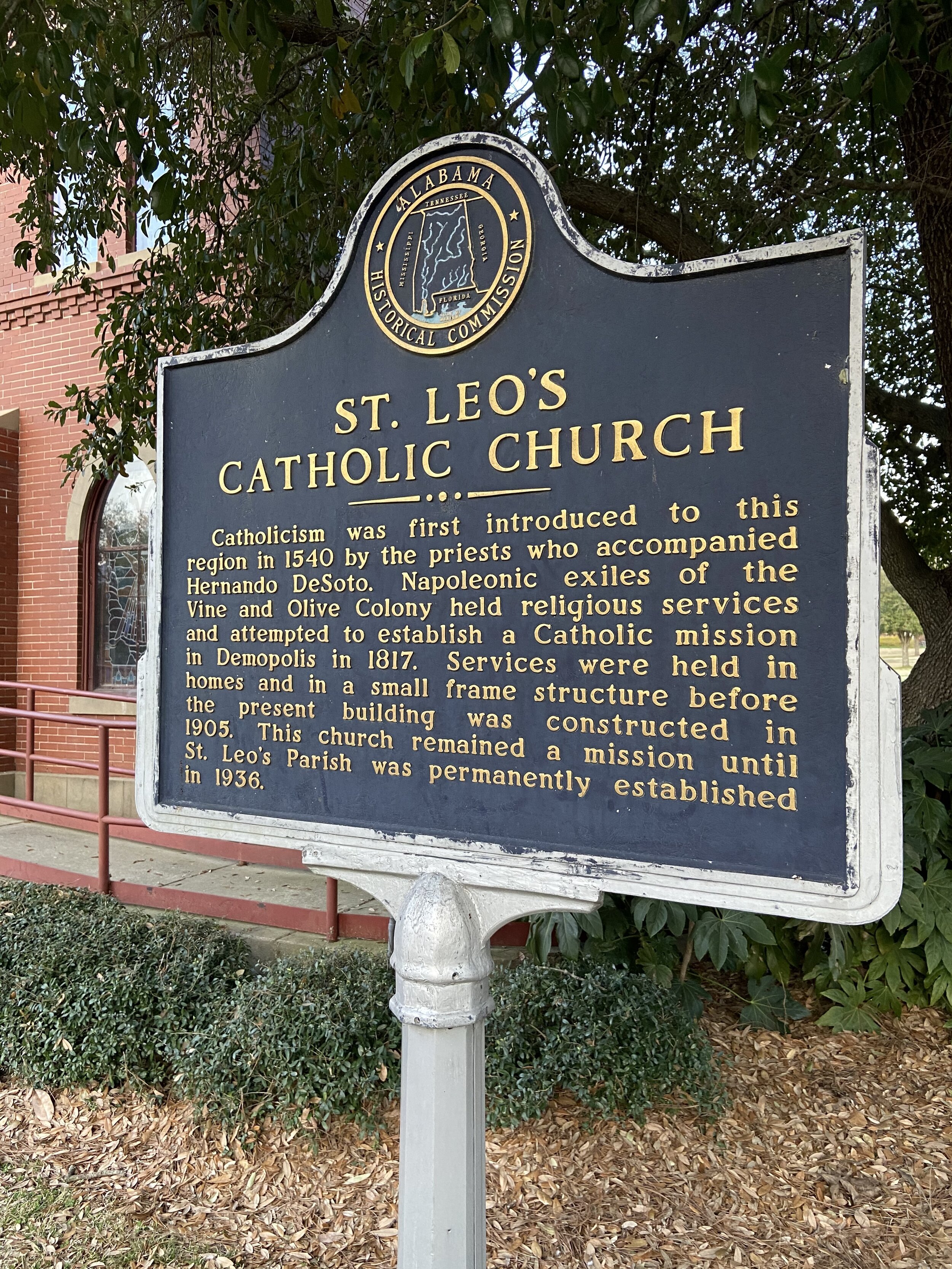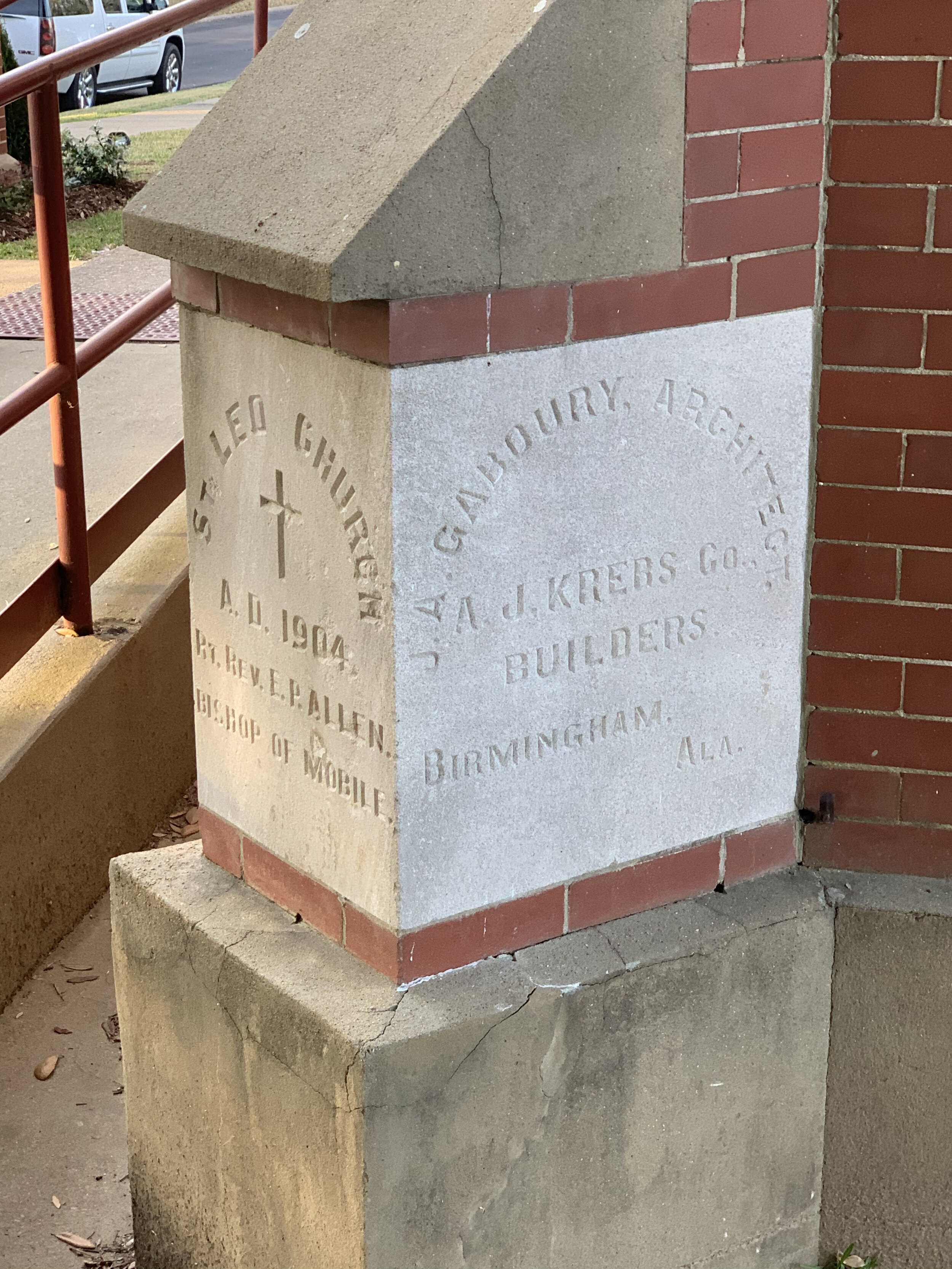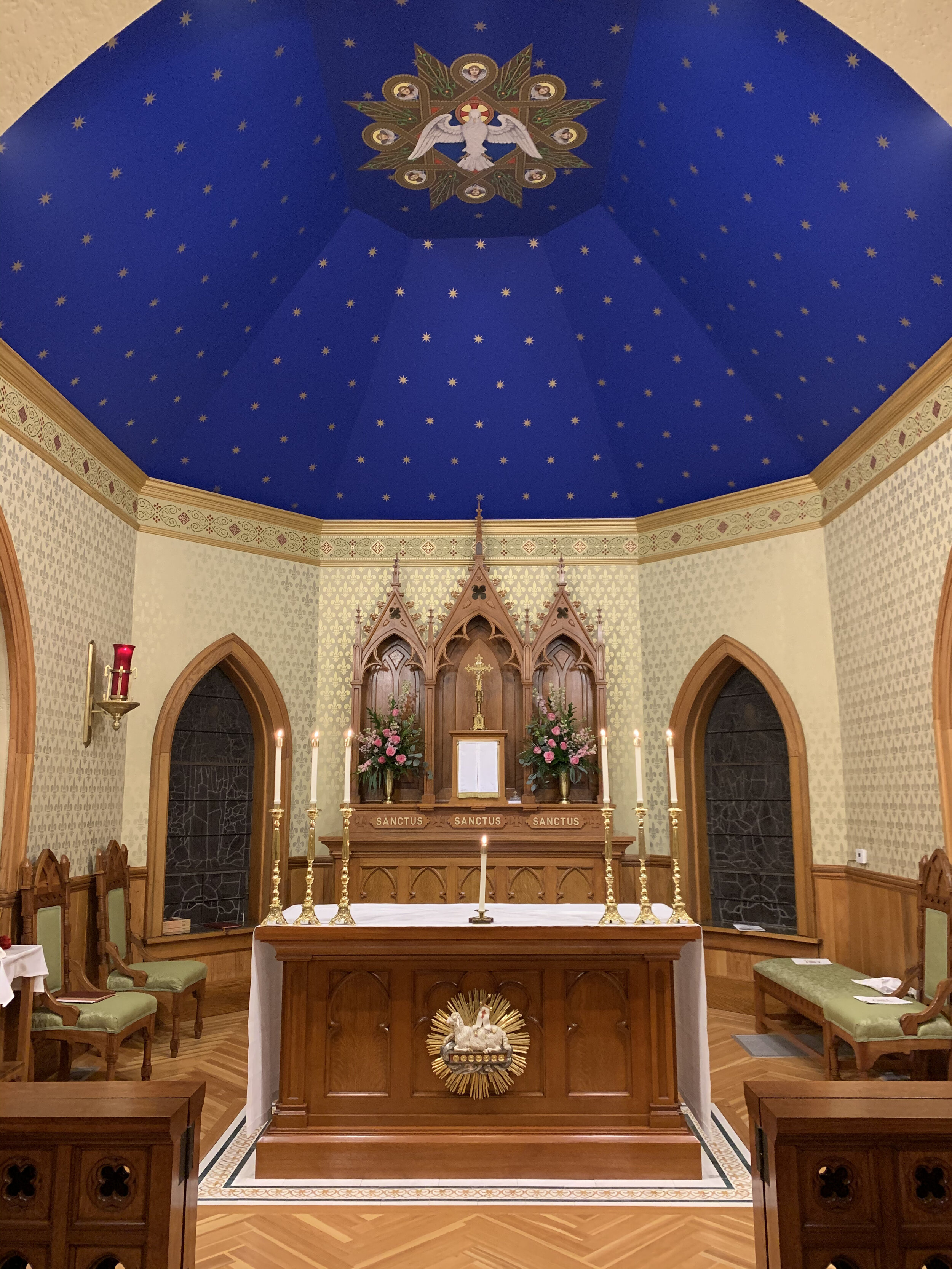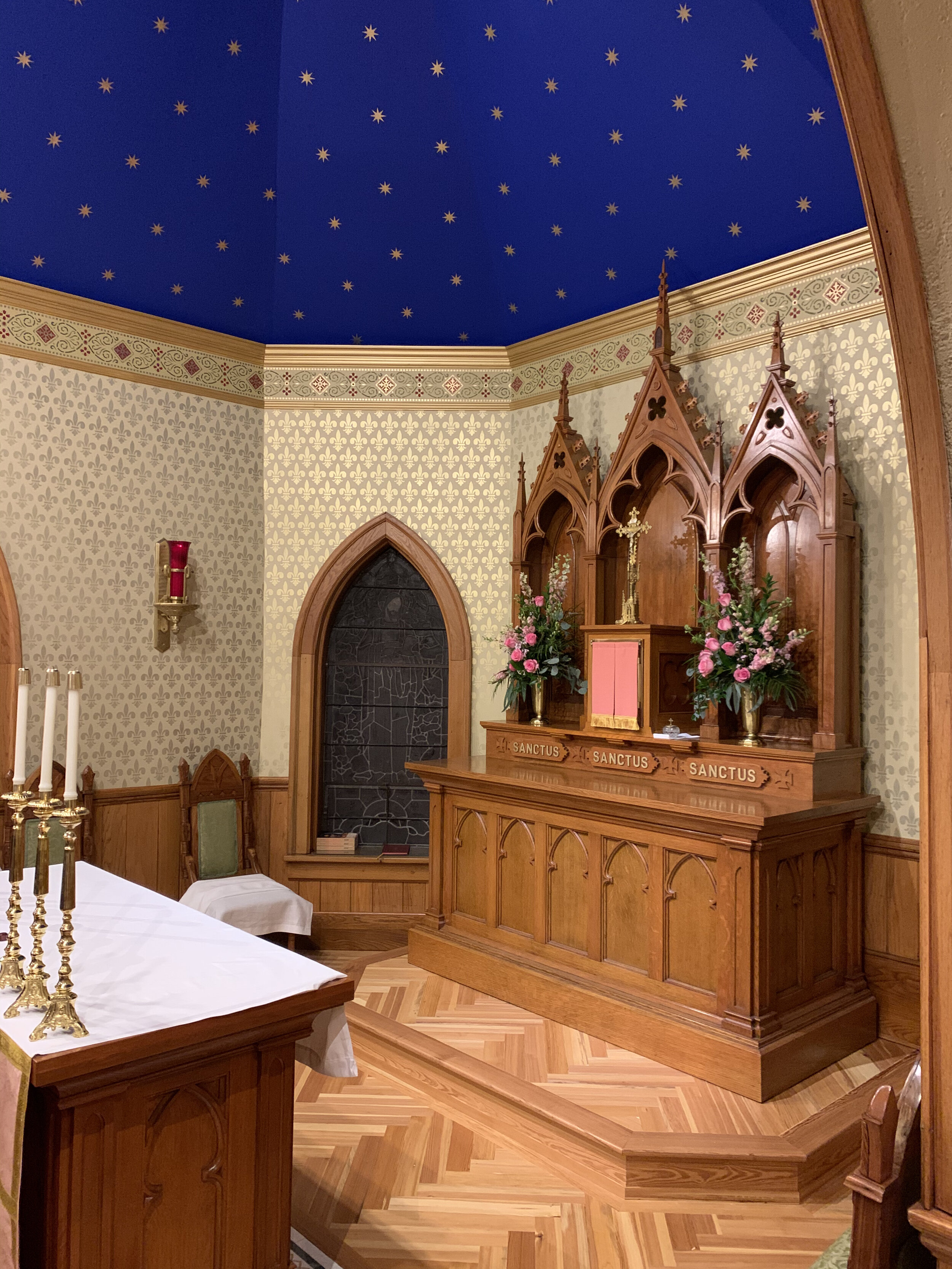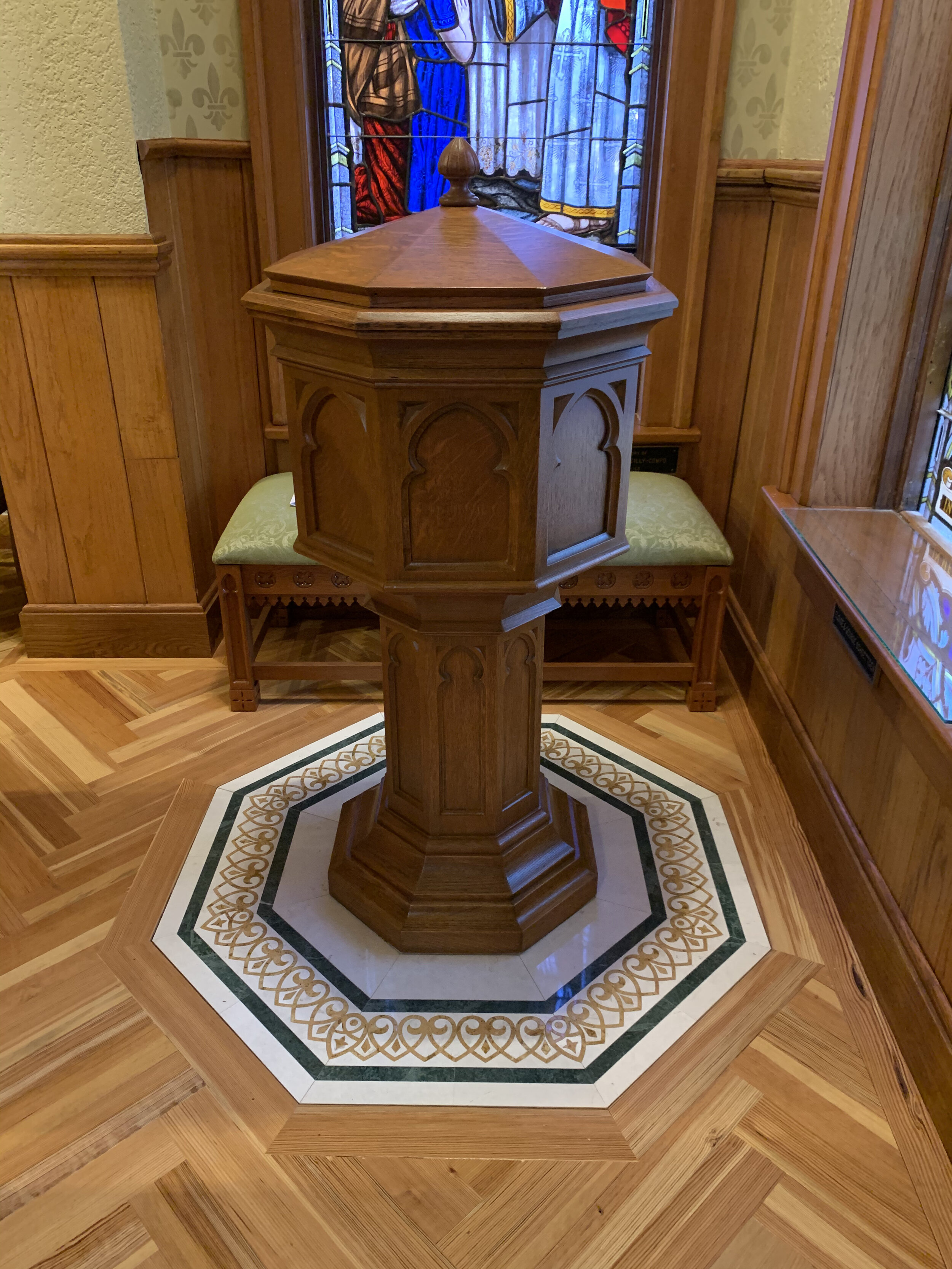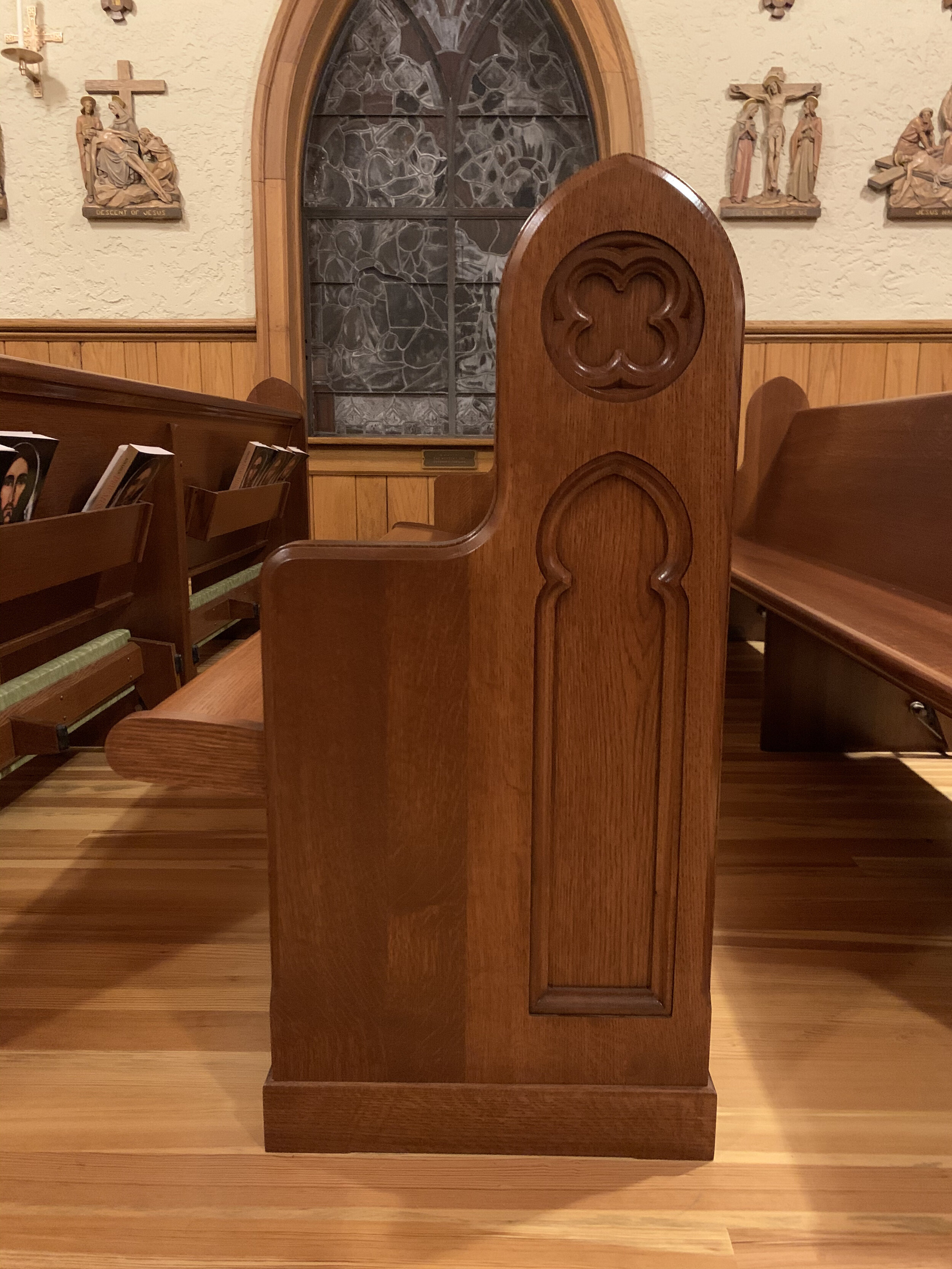St. Leo the Great Church Rededicated in Demopolis, Alabama
by Michael F. Tamara
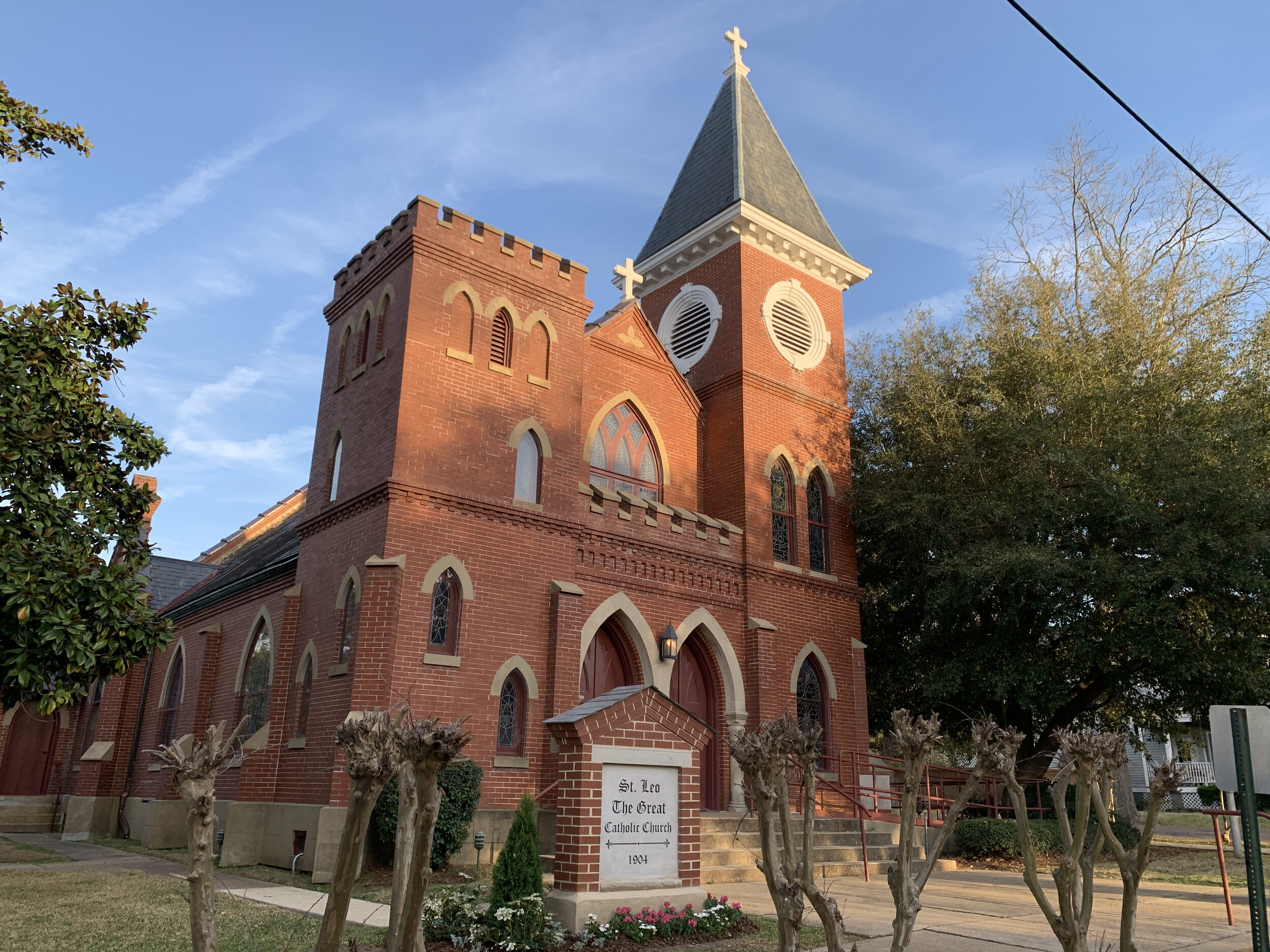
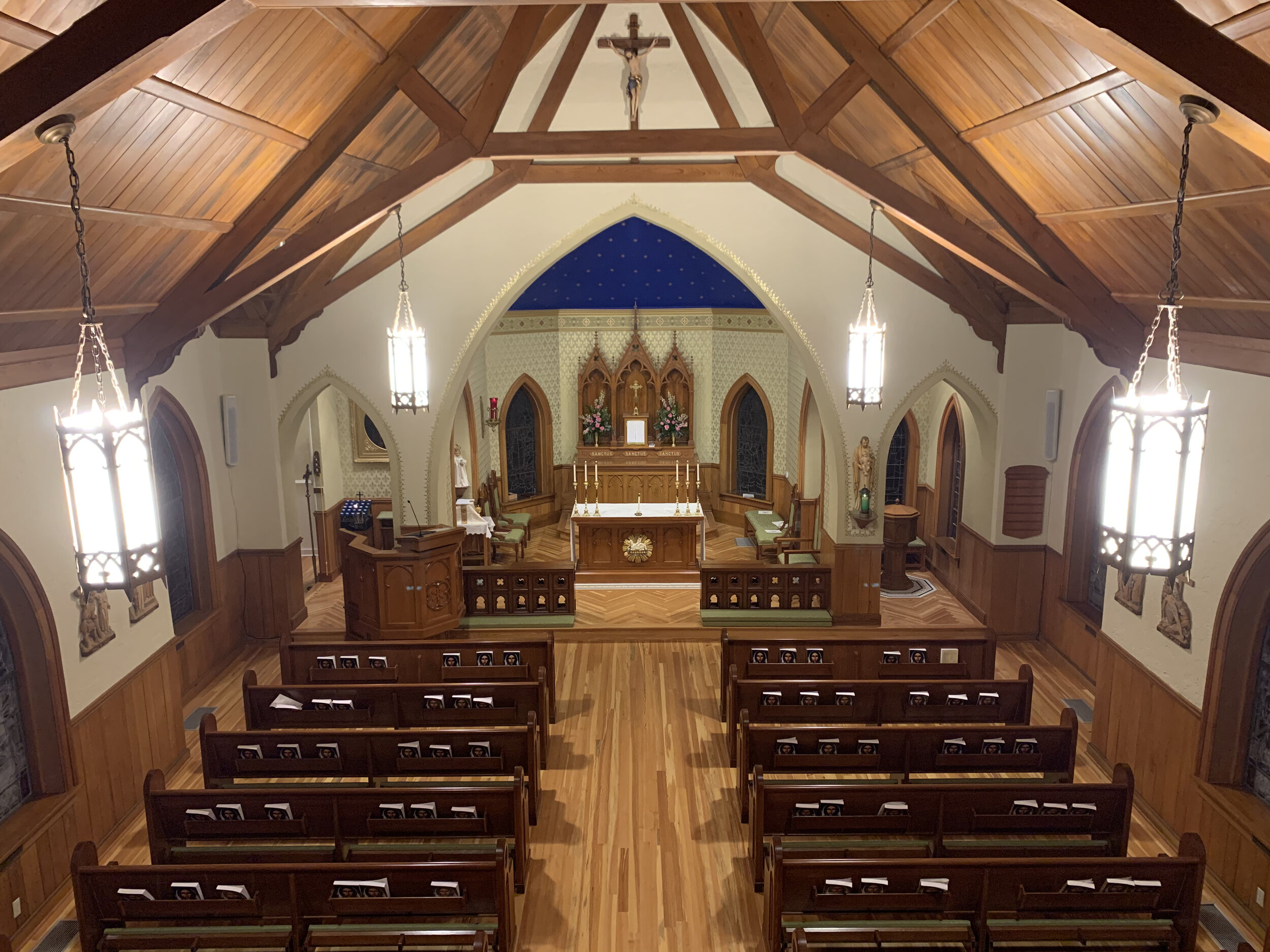
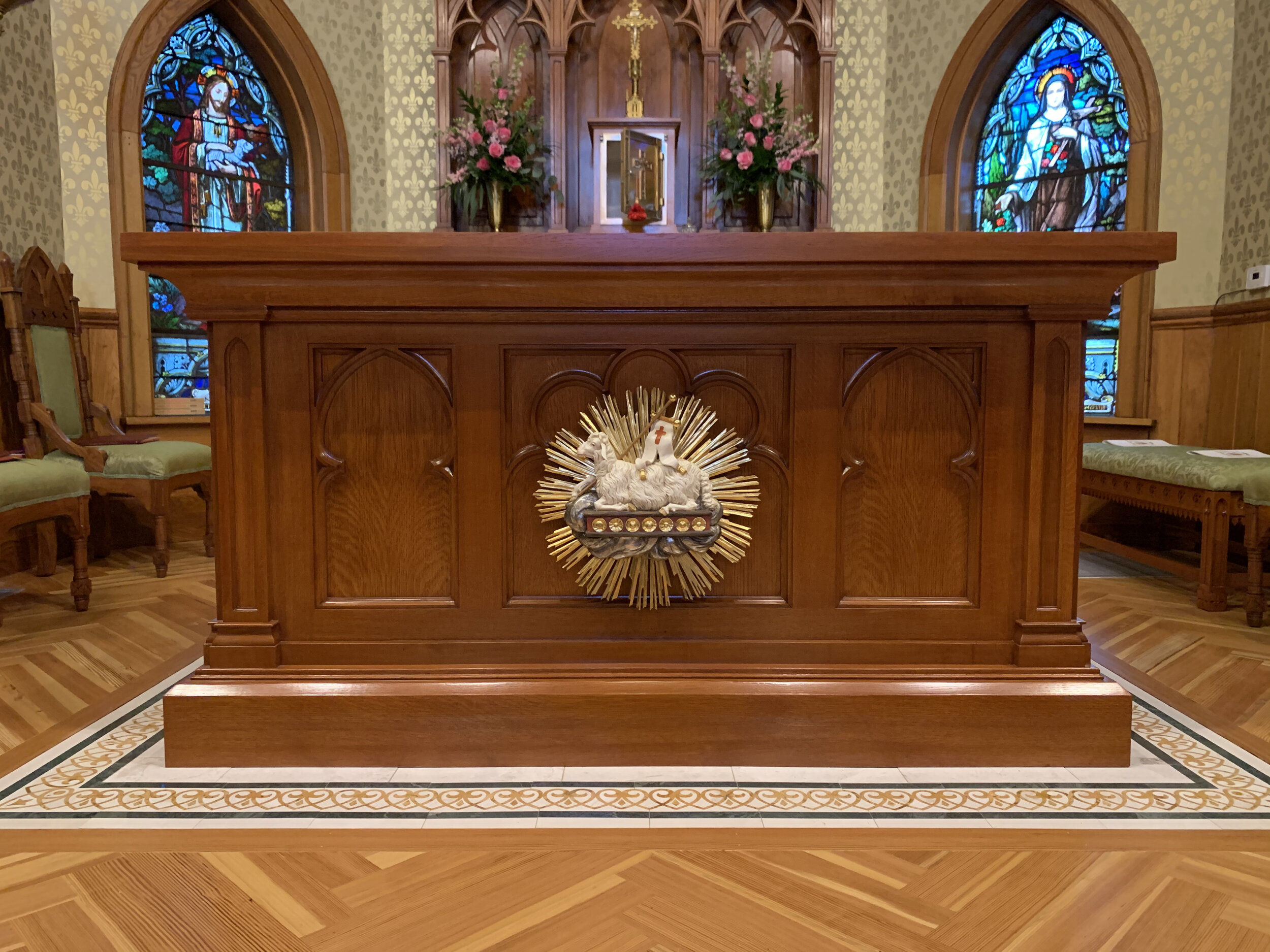
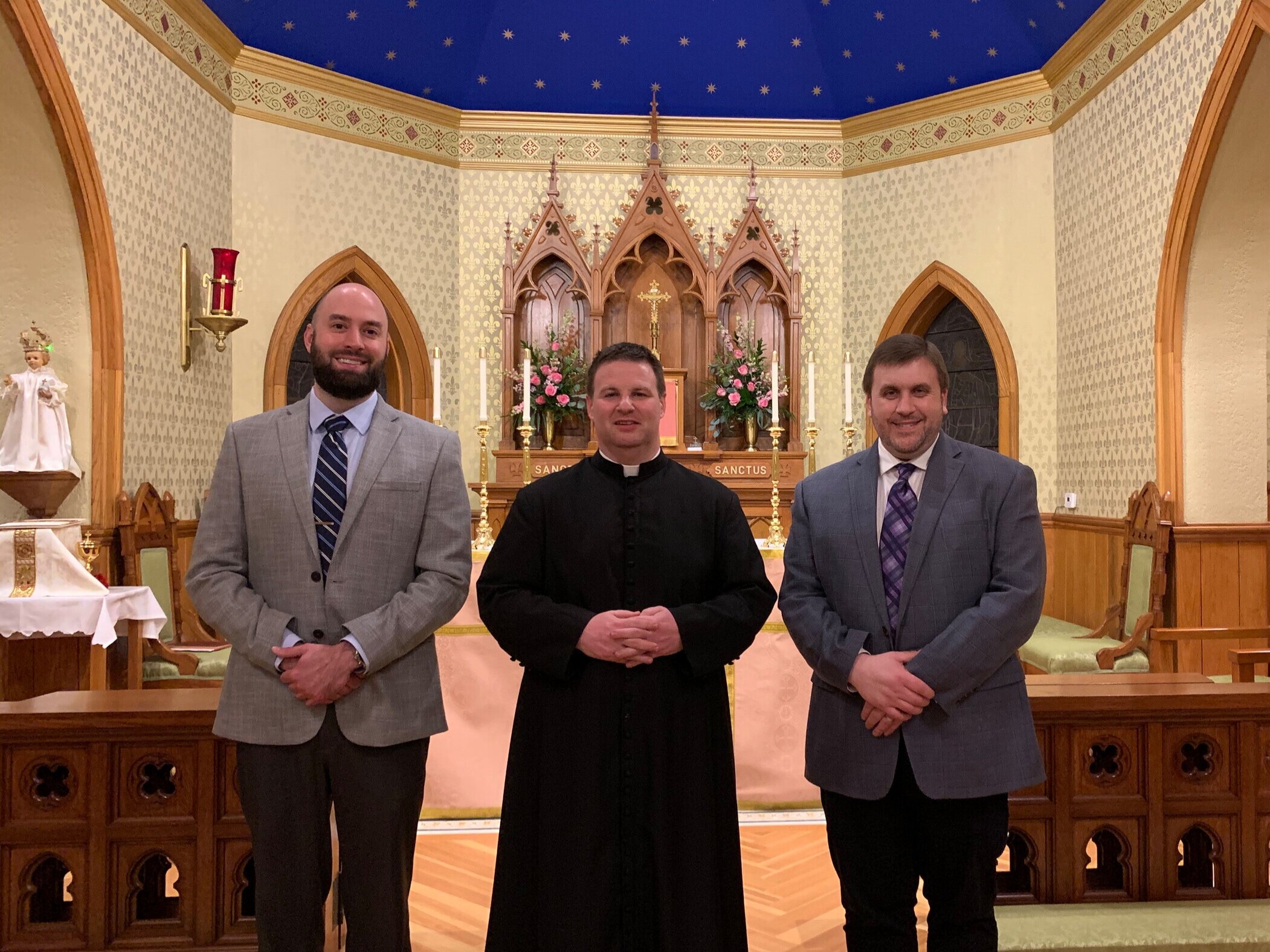
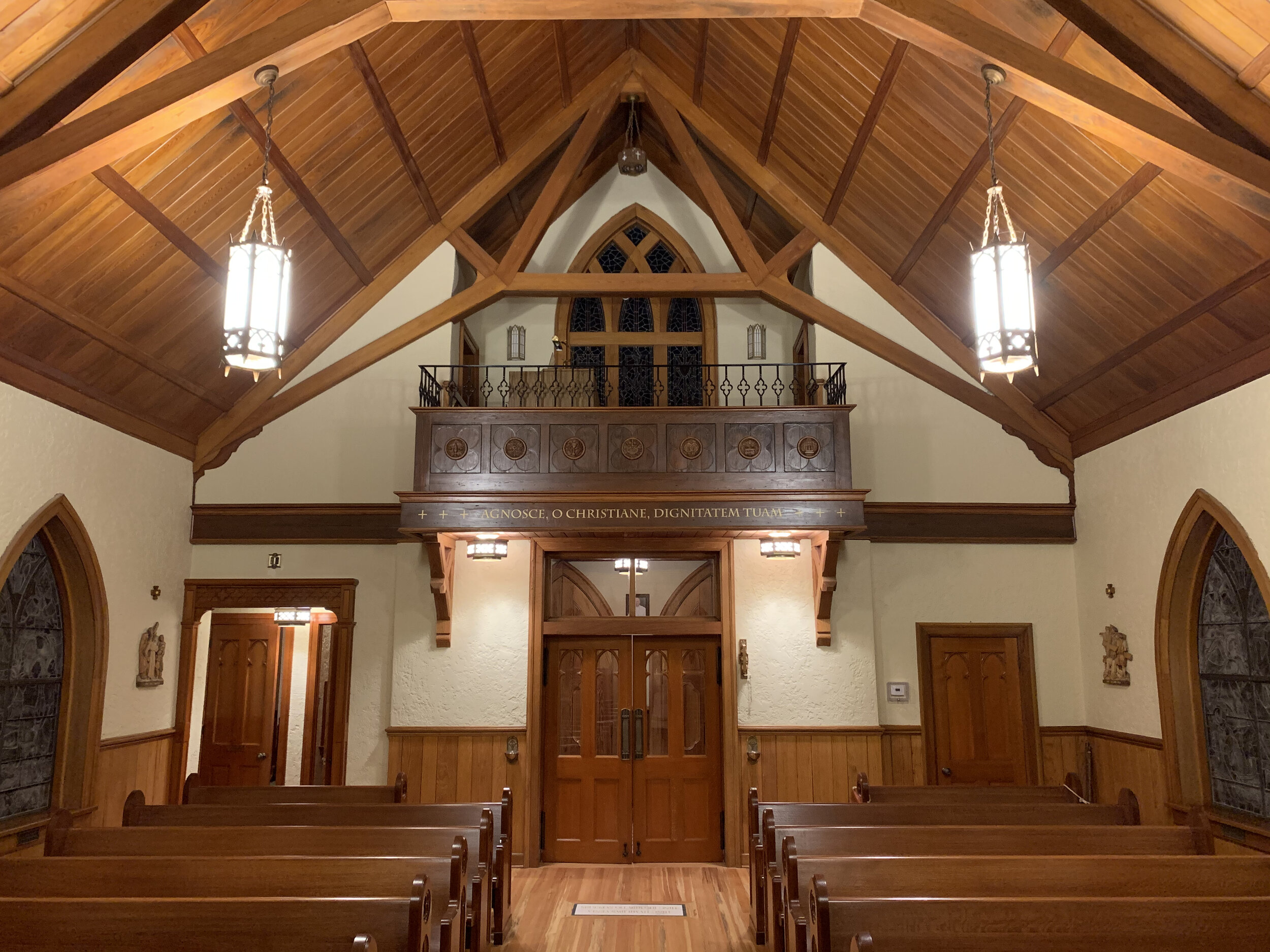
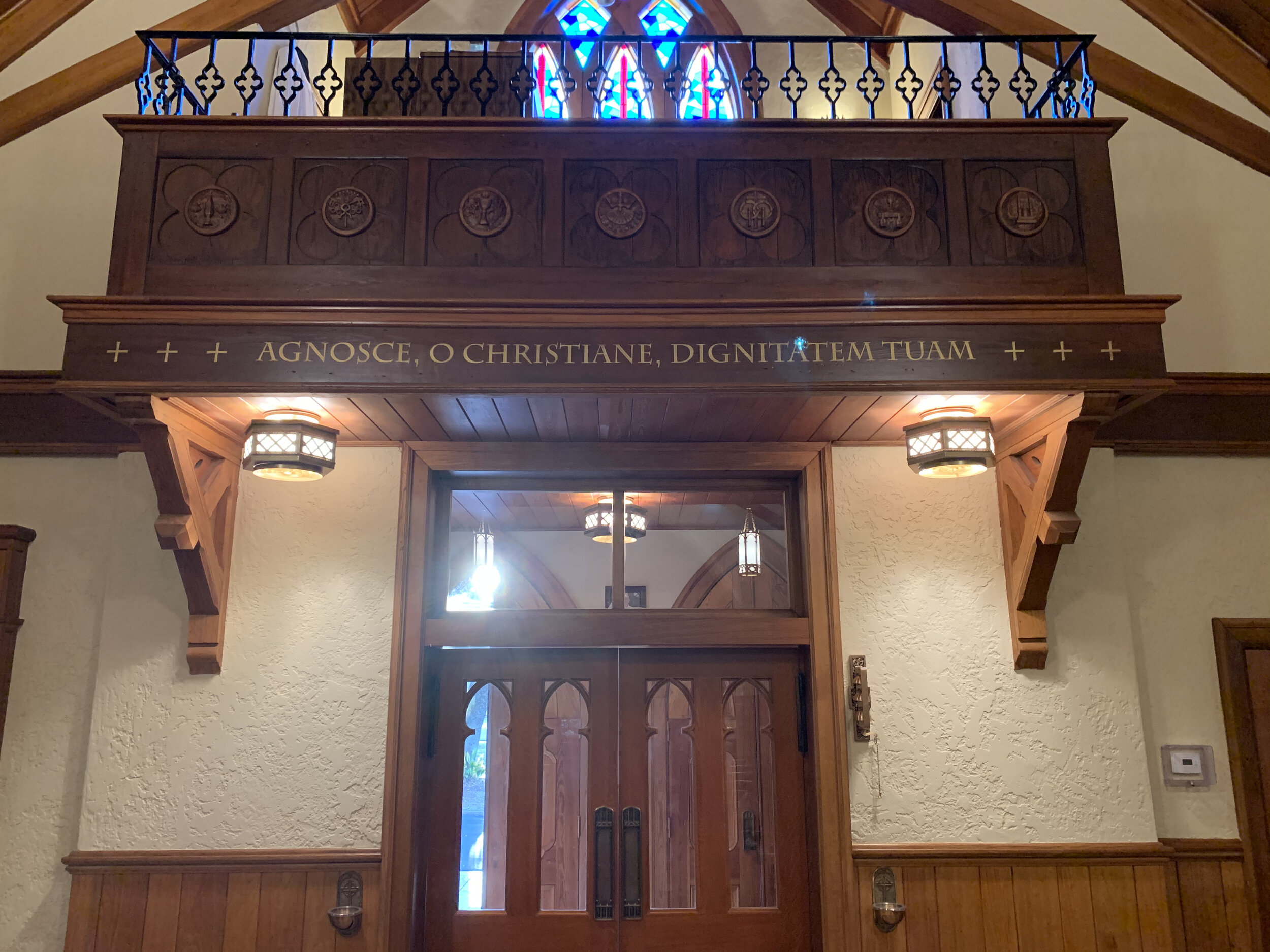


On March 12, 2021, The Most Reverend Steven J. Raica, JCD, Bishop of the Diocese of Birmingham, joined the Very Reverend Justin L. Ward, STL and the people of St. Leo the Great Parish in Demopolis to solemnly dedicate their new altar and freshly renovated church. Bishop Emeritus Robert Baker was also present for the occasion, along with several other priests and seminarians.
The Solemn Pontifical Mass marked the culmination of a year of efforts, led by Fr. Ward in his role as Parochial Administrator, to renovate the interior of the 1905 neo-Gothic church, the integrity of which had been gradually diminished over decades, starting with a fire, and continuing with subsequent piecemeal modifications and the simple ravages of time. The project sought to recover a more coherent expression of the beauty of the sacred mysteries of the liturgy and to restore aesthetic consistency in the art and architecture.
Studio io provided the overall vision, liturgical design, and conceptual furniture design. Murals by Jericho designed and executed the decorative paint scheme and managed the construction process, with New Holland Church Furnituredeveloping and crafting the new interior wooden furnishings.
Prior to the renovation, mid-century wood paneling ran floor to ceiling in the sanctuary, with presider and server chairs and a modern-style resurrected Christ statue on the back wall only recently having been replaced by a tabernacle stand and traditional crucifix. Wall-to-wall red carpet covered the floors, and the interior was whitewashed save for stained wood wainscoting and the original rich wooden beam ceiling.
The new design, informed by photographs of the original interior yet not seeking to replicate it, includes a paint scheme in the sanctuary depicting a deep blue sky studded with golden stars and a dove representing the Holy Spirit surrounded by cherubim above the new altar, on which is depicted the Agnus Dei in the form of a relief sculpture made by ALBL Oberammergau. This entire image is a reminder that the liturgy joins us mystically to the life of the Trinity through the Paschal act of Christ made present by the Holy Spirit; an echo of the eternal heavenly liturgy. A painted scene was also considered for the high wall above the sanctuary arch in between the beam timbers, but it was decided that the crucifix should be hung there, evoking the appearance of an English rood beam.
Reclaimed native heart pine flooring runs throughout the church, laid lengthwise in the nave and in a herringbone pattern in the sanctuary to reflect its liturgically elevated place as the threshold between heaven and earth. An inlaid band of green, gold, and cream-colored marbles surrounding the altar, and a marble altar stone the full size of the mensa, further emphasize the dignity and sacrificial nature of the liturgy through material hierarchy. The same marble floor inlay in the baptistry around the font visibly joins it to the altar and marries the two to the architecture as the most important elements within, speaking to the permanence of place for liturgical actions as opposed to loose furniture that can be moved or separated from the dignity of the holy temple. A simplified version of the marble inlay is also located at the back of the nave near the entrance doors in the form of an inlaid floor plaque.
The elevated chalice-style ambo and adjacent full gated communion rail are two of the most readily noticeable changes. In addition to the practical purpose of providing the option of receiving Holy Communion while kneeling, the reintroduction of the rail works in conjunction with the elevated material hierarchy in the sanctuary to serve as a permeable veil to the Holy of Holies; the heavenly throne room that lies beyond, as typified in the Jewish temple of the Old Testament. Locating the ambo as a slight extension of the sanctuary into the nave is also not without significance. While done in part due to the relatively limited space around the altar, it also makes sense liturgically: whereas prayers and sacrifice are offered up to God behind the rail, the Word is proclaimed to the faithful and the homily delivered from a place still clearly delineated, yet prominently in their midst.
All furniture is made of quartered white oak with a distinctive quatrefoil and foiled arch lancet motif that draws inspiration from both original woodwork in the church and two salvaged antique period pieces: a wooden reredos donated and hand-refurbished by a craftsman who is a lifelong parishioner, and a restored wooden baptismal font. All other major furniture items are newly crafted, including the altar of sacrifice, ambo, communion rail, confessional, pews, presider’s chair and servers’ benches, and several interior door replacements.
A subtle indicator of the titular saint is a newly added Latin inscription above the entrance doors on the frieze of the choir loft, which comes from a Christmas sermon given by Pope St. Leo the Great. Translated, it reads, “Remember, O Christian, your dignity.” A powerful reminder that the faithful share in God’s nature as a direct result of His sacraments just celebrated within, this is one of the last things a person sees when exiting the church and going back out into the world.
Indeed, even beyond the sanctuary, the entire church interior is meant to be a renewed expression of the glory of the Trinity and the dignity of God in man, and a sacramental to vividly nourish the human eschatological desire to dwell in the heavenly Jerusalem for eternity.

